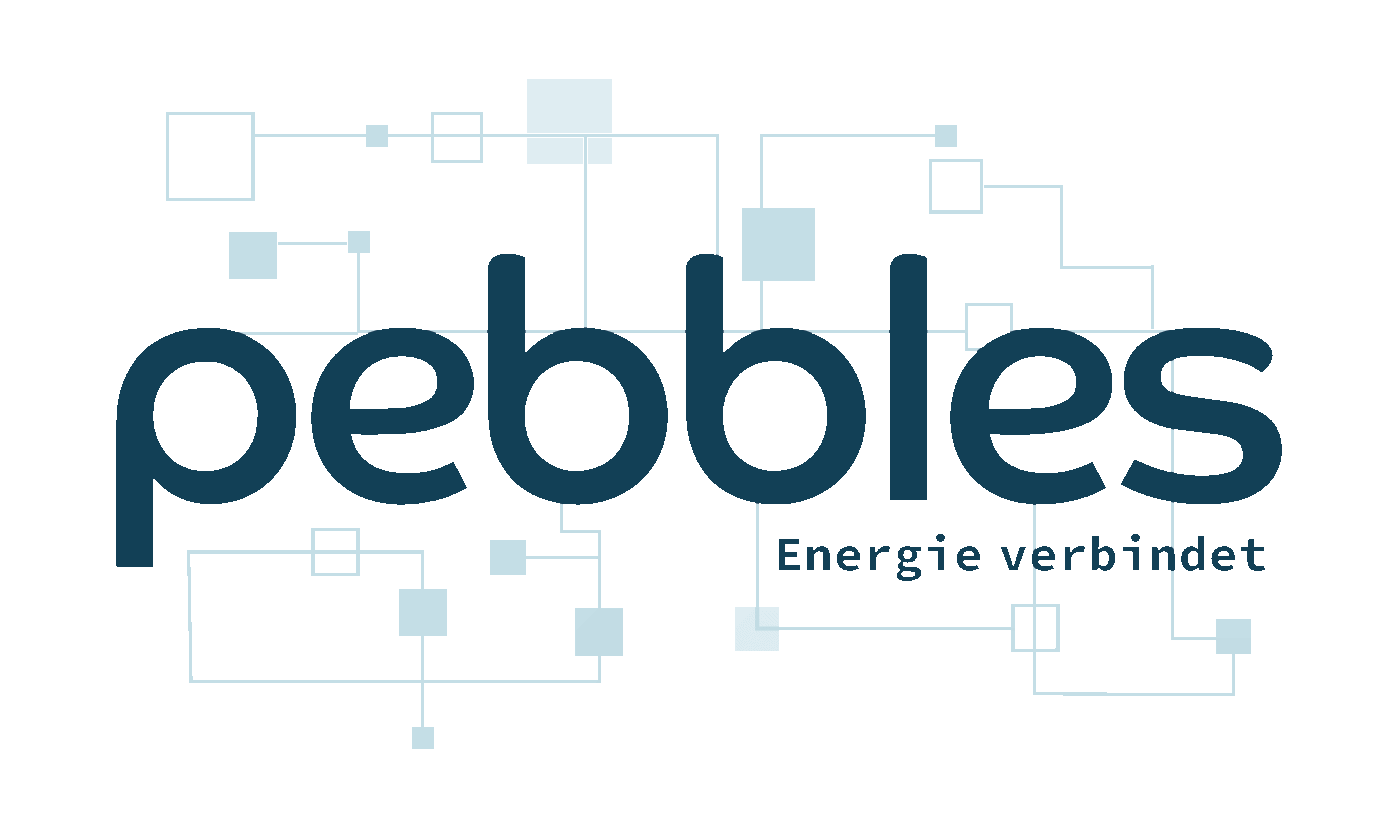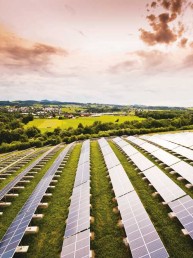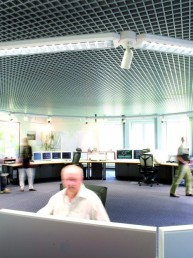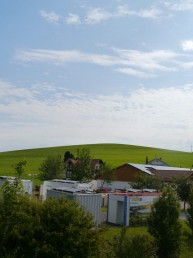Domestic and, in particular, cross-border electrical grids have not been sufficiently expanded. Yet, technology continues to progress. These two factors combined are increasingly shifting the focus of thinking in the area of future energy supply-system design onto smart and decentralised approaches.
The pebbles project (peer-to-peer energy trading based on blockchains) is supported by the Federal Ministry for Economic Affairs and Energy as part of the Smart Service World II programme. The project is to design, develop and field test a digital platform concept for peer-to-peer trading (P2P trading) and the exchange of grid services.
The project will run for three years from March 2018 to February 2021.
pebbles was successfully completed in November 2021.
Domestic and, in particular, cross-border electrical grids have not been sufficiently expanded. Yet, technology continues to progress. These two factors combined are increasingly shifting the focus of thinking in the area of future energy supply-system design onto smart and decentralised approaches.
The pebbles project (peer-to-peer energy trading based on blockchains) is supported by the Federal Ministry for Economic Affairs and Energy as part of the Smart Service World II programme. The project is to design, develop and field test a digital platform concept for peer-to-peer trading (P2P trading) and the exchange of grid services.
The project will run for three years from March 2018 to February 2021.
Goal: to develop and demonstrate innovative, regional, digital energy supply approaches with specific focuses on:
Decarbonisation
- Reducing energy consumption
- Creating the conditions to further expand the use of renewable energy sources
- Developing solutions for use in the trend towards electrification (in particular in the transport sector)
Decentralisation
- Minimising system costs
- Facilitating sector interdependence – heating, transport, electricity and storage
- Facilitating active participation, such as prosumption
- Developing cellular approaches and energy communities
Digitisation
- Determining economically efficient trade-offs between grid expansion and smart solutions for distribution systems
- Facilitating automated and decentralised solutions
- Using a blockchain strategy
We aim to decentralise energy systems by bringing to market non-centralised energy conversion plants, e.g. using a virtual power plant.
We are bringing the energy transition online. Our work is based on a law which came into force in 2016.
We want to democratise the energy supply by actively involving end users and small-scale producers. We aim to achieve this by universally rolling out modern ICT infrastructures to facilitate participation in the energy supply network.
We are working to expand the role of the grid operator by developing cutting-edge concepts: market-based interventions which capitalise on the flexibility of decentralised plants.
We aim to decentralise energy systems by bringing to market non-centralised energy conversion plants, e.g. using a virtual power plant.
We are bringing the energy transition online. Our work is based on a law which came into force in 2016.
We want to democratise the energy supply by actively involving end users and small-scale producers. We aim to achieve this by universally rolling out modern ICT infrastructures to facilitate participation in the energy supply network.
We are working to expand the role of the grid operator by developing cutting-edge concepts: market-based interventions which capitalise on the flexibility of decentralised plants.
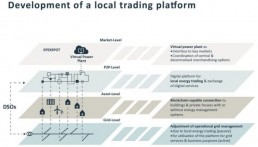
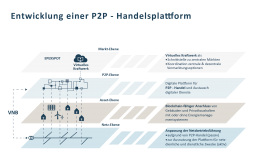
MEMBERS OF THE CONSORTIUM AND OUR GOALS
Allgäuer Überlandwerk is tasked with developing, monitoring and launching a trading platform for end, business and industrial users, as well as plant and grid operators and energy producers. This platform will use Smart Contracts to automatically trade energy, flexibility and support services. Blockchain technology makes it possible to securely bundle the trade, supply, certification and payment of a transaction and to publish and save the transaction data publicly in real time and with no risk of forgery.
- To develop business models for Energy Market 4.0.
- To operate a local energy trading platform for P2P (peer to peer), P2VPP (prosumer to virtual power plant) and P2EEX (prosumer to Energy Exchange) selling.
- To optimise virtual power plant usage.
- To expand our portfolio to include energy services for prosumers, producers and consumers.
- To ensure traceability of green energy.
- To reduce transaction costs.
AllgäuNetz’s goal is to identify useful patterns of prosumer behaviour from the grid and define the conditions required for a local energy trading network (peer to peer) to function as seamlessly as possible. The aim is to define the requirements of the prosumer equipment which is needed to automatically monitor the system and to ensure that peer-to-peer transactions are physically possible.
- To integrate the results into the methods used for grid planning, operation and expansion.
- To pinpoint potential savings in the operation of supply grids by actively identifying prosumer behaviour and providing incentives for prosumers to self-optimise.
- To expand the Wildpoldsried energy campus in order to demonstrate local, blockchain-based energy trading (P2P) along with the optimisation of the verification process used in theoretical analysis and algorithms.
Siemens AG is using academic research methods to determine which new business models would enable blockchain-based direct trading of energy and system services between end users in a regional marketplace, given the provision of digital services to help integrate renewable energies into the energy system in a cost-efficient manner and, in turn, reduce costs for system operators and consumers.
- To develop a local trading platform (market mechanism, market and network optimisation and decentralised architecture).
- To produce prognostic algorithms for load profile, generation and market prices.
- To create smart blockchain gateways.
- To design local energy management systems which actively participate in local trading.
- To provide an energy management system, prognostics algorithms and data mining applications as cloud services.
- To construct innovative, platform-based business models.
Kempten University of Applied Sciences is working on new issues affecting the electrical grid, which are caused by enabling local energy trading (peer to peer) on a large scale. Our existing demonstrator at the Wildpoldsried energy campus provides the technological basis to research, optimise and present this kind of energy trading in all of its complexity without impacting on energy consumers’ quality of experience.
- To expand the Wildpoldsried energy campus to demonstrate blockchain-based P2P energy trading and optimisation of the verification process used for theoretical analyses and algorithms.
- To generate knowledge and integrate this new knowledge into research and teaching.
Fraunhofer Gesellschaft aims to design a digital platform for future energy supply systems and optimise it based on several criteria. In particular, we are focussing on making allowances for limitations and on the changes which will need to be made to the technical, economic, institutional, and legal and regulatory frameworks. Using a simulated pre-analysis as a basis, we hope to identify potential business models with a high degree of economic potential for all stakeholders (in particular for energy suppliers, distribution system operators, end users and system operators/prosumers).
- To apply simulation analysis to (further) platform-based business models.
- To develop a Smart Contract Library for energy applications.
- To compare different blockchain options/infrastructures.
- To take into account the business models used by energy suppliers, virtual power plants, distribution system operators and prosumers.
- To provide virtual participants.
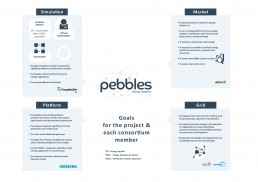
PROJECT PLAN
I. Work up concepts and carry out pre-analysis on trade processes and grid services, as well as specifications, functionality and interfaces for the platform.
II. Develop prototypes of software and hardware components, as well as the necessary information and communication technology to connect participants, the virtual power plant and the grid to the platform. The platform is to be built on a blockchain infrastructure, since blockchain has shown huge potential in the areas of data protection, transparency and process automation.
III. Implement the concepts in a demonstrator in order to test the designs and technologies in real life. The first testing phase will verify functionality and safe operation. Then, long-term demonstrations of planned usage scenarios can be set up.
IV. Alongside this application-oriented development pathway, carry out regular analyses to provide overall evaluations of our new concepts and technologies, as well as scaleable assertions about them.
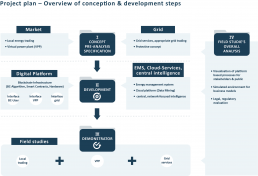
Based on this conceptual design and develpoment steps we want to create a complex, plattformbased system:
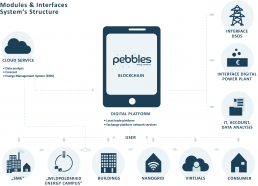

The key component is the digital platform which connects all stakeholders using information technology.
Alongside the smart market trading platform, which facilitates separate P2P trading of energy products and grid services, we aim to develop a further software component to facilitate trade which is based both on the grid and the market.
This clear separation of market and grid makes for a more fragmented approach. However, our second approach is intended to unlock the potential of the distribution system operator playing a more active role and intervening more aggressively in market developments. This will demonstrate different possible options for how future, platform-based, local energy supply systems could be organised.
Our supplementary cloud service platform comprises digital services which are necessary to the implementation of the platform processes.
Our energy management services (EMS) come into play when the customer does not have their own EMS but does provide access to interfaces which allow communication with the cloud-based EMS. This is the case for the energy campus in Wildpoldsried (stationary battery energy storage as a stand-alone grid for Kempten University of Applied Sciences) and for SMEs (small and medium-sized enterprises).
A smart building and the nanogrid – an intelligent residential building – have their own local EMS. In this case, only input data, generation and load prognostics, bids and offers are directly transferred to the platform.
Virtual users are added flexibly as participants to ensure liquidity and to test scalability within local trading. They can be designed to imitate users with or without their own EMS.
End users whose households do not possess their own EMS can communicate with the platform using independent smart home gateways.
